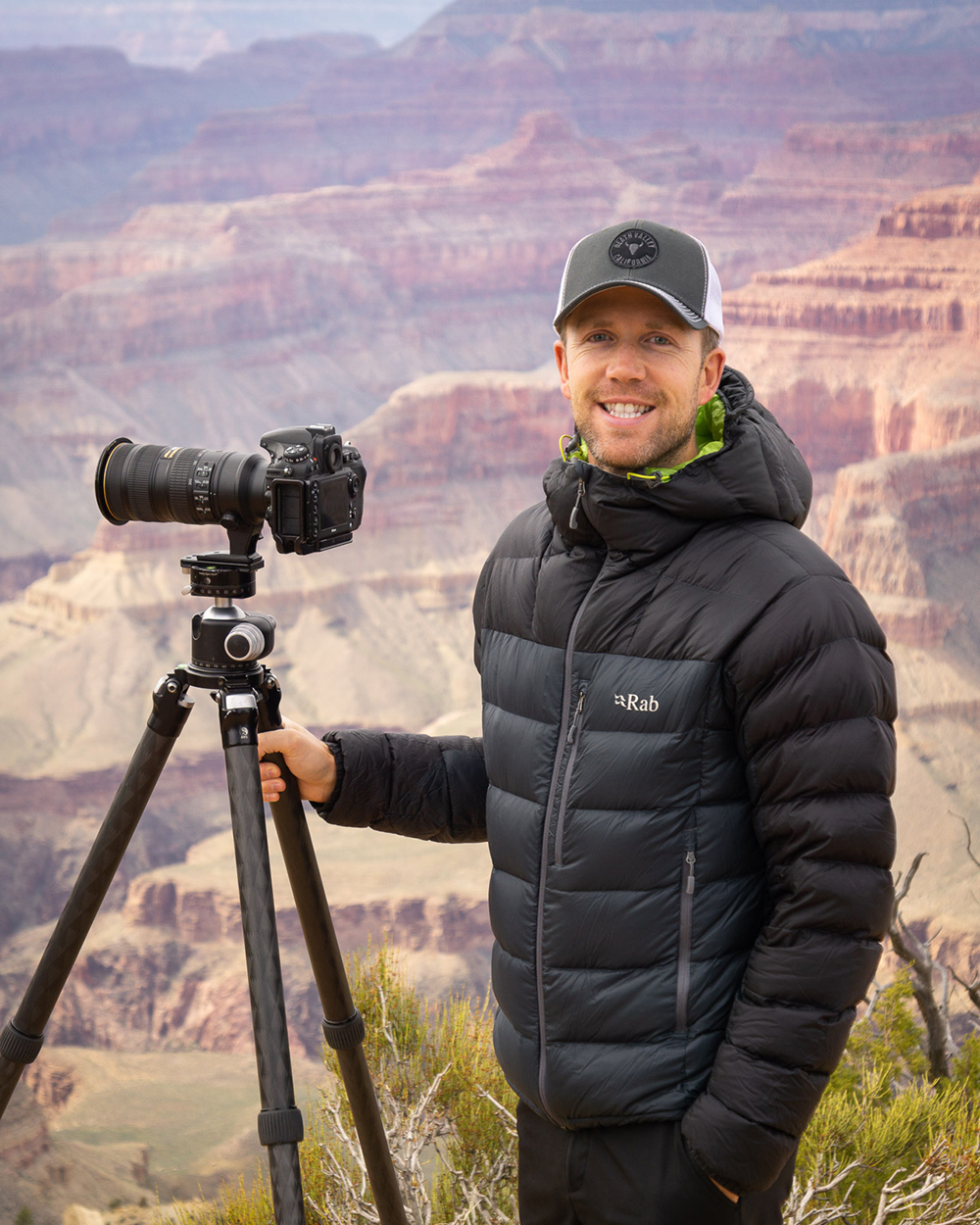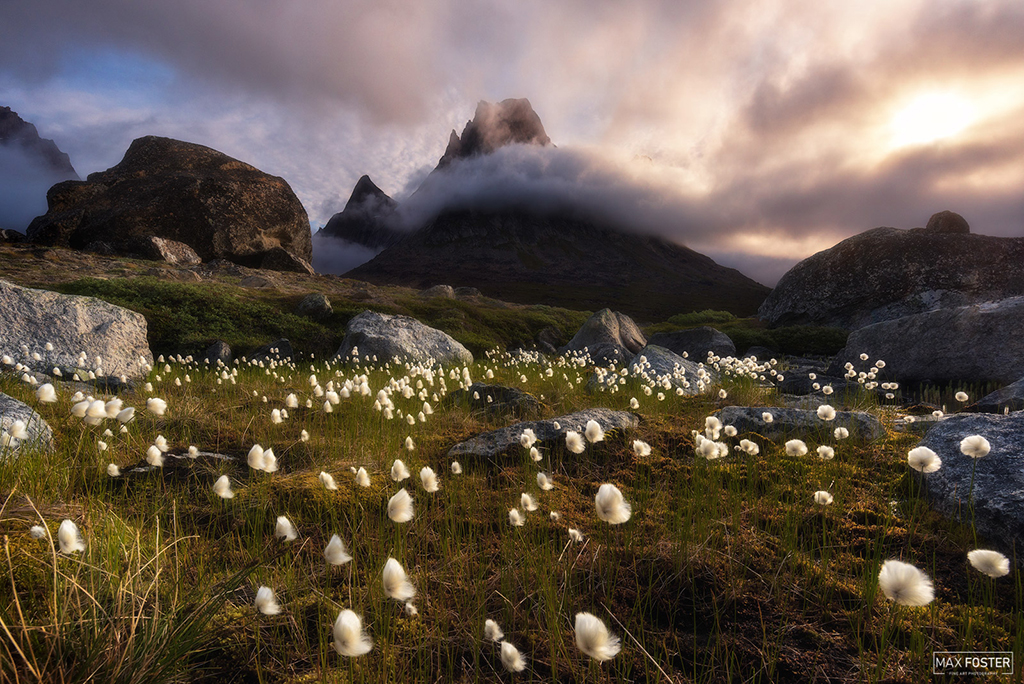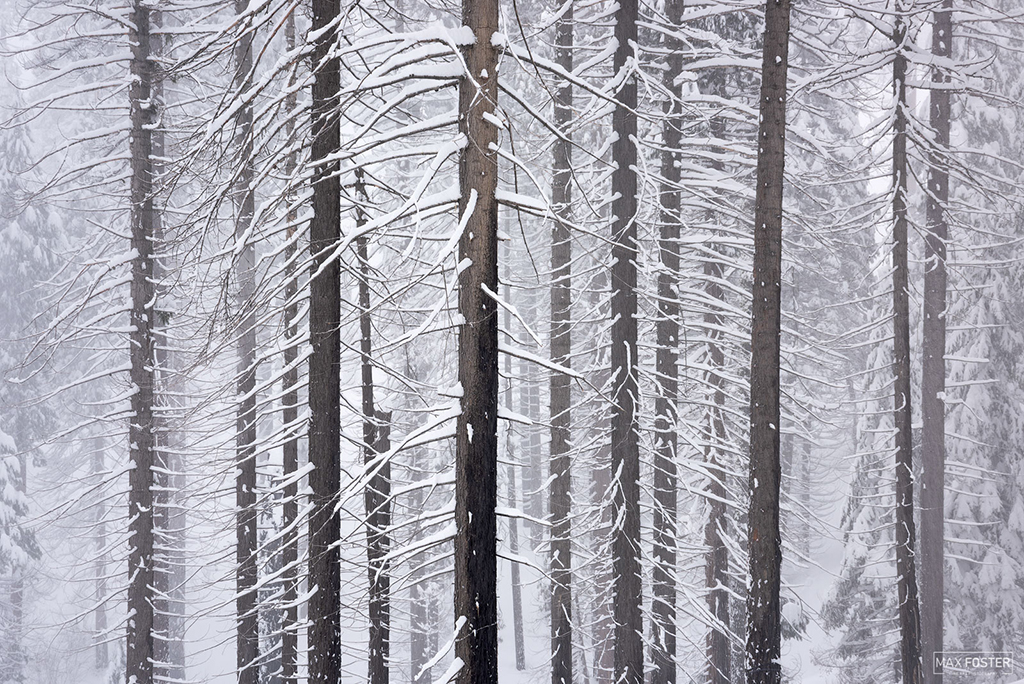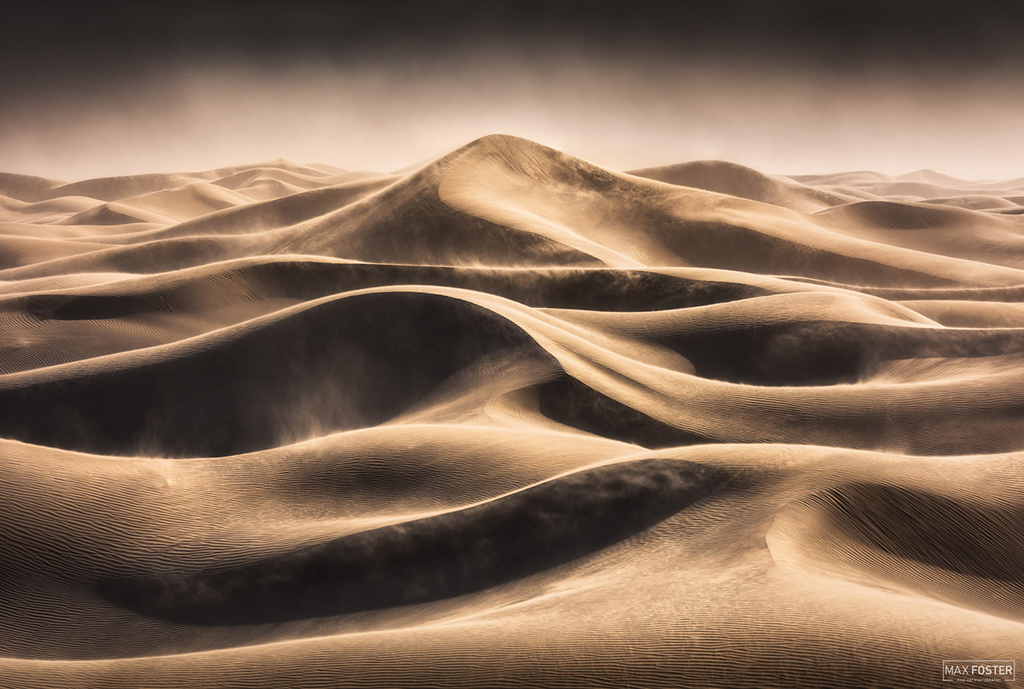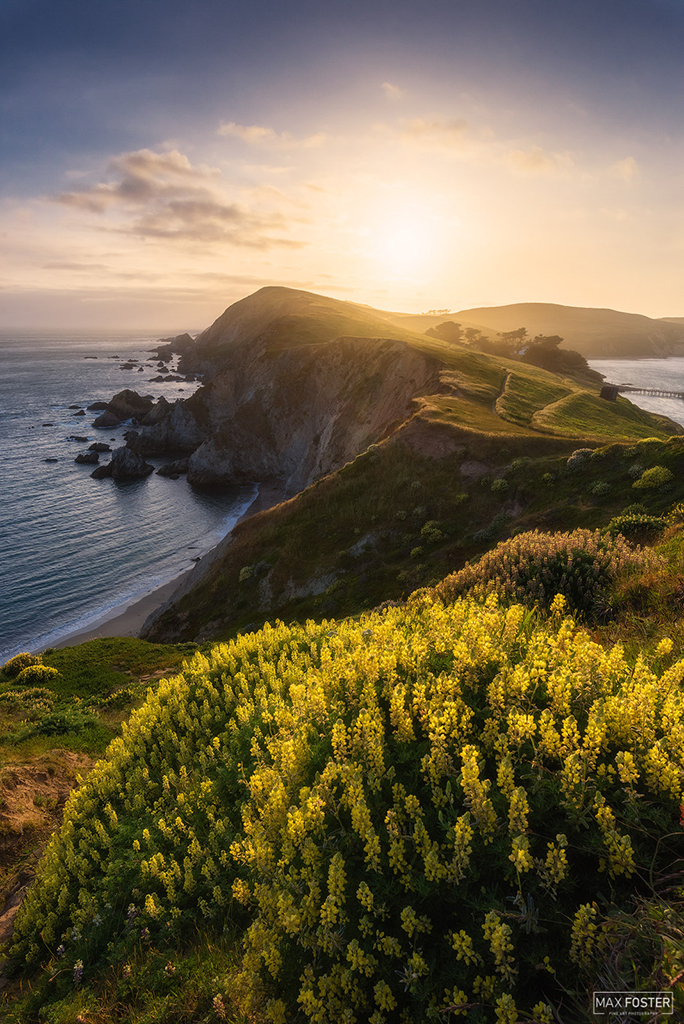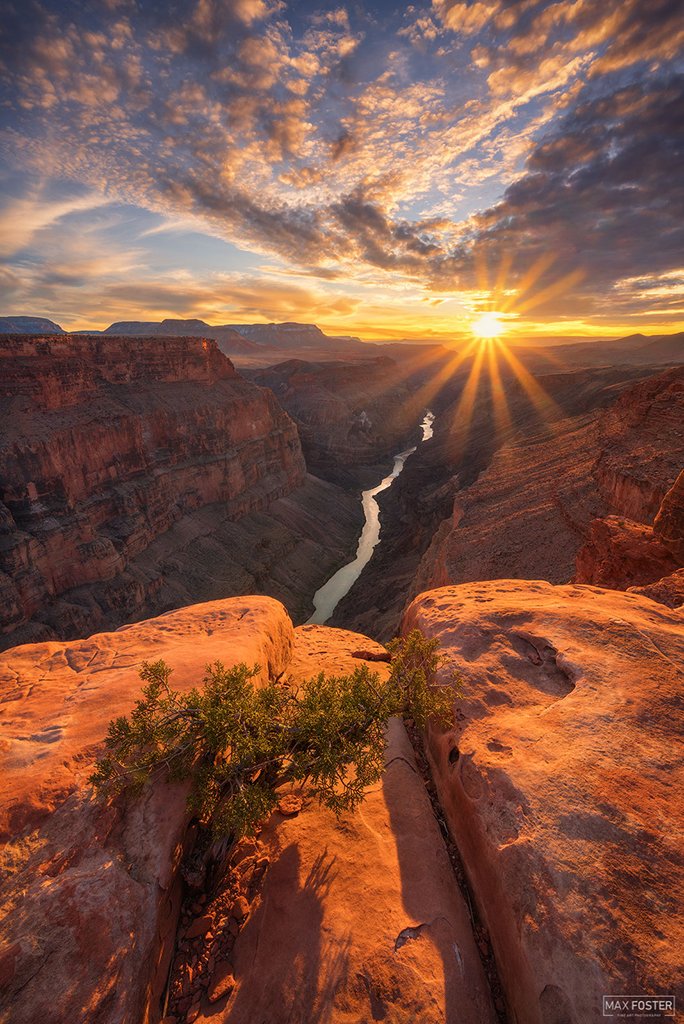
|
|
|||||
|
Featured Photographer, April 2020: Max Foster
We are happy to have Max Foster as our featured guest photographer this month. We appreciate that he gave us some of his time and generously shared his beautiful photography with us! Please visit his links to see more of his work, and to let him know you enjoyed this interview. :: How did you get started in photography as an artistic outlet? My story is similar to many in the photography world. I started traveling with my wife and realized that my photos were terrible. We visited incredible places like Italy and French Polynesia, but my photos were simple snapshots with no forethought or planning. I wanted to remember the places I visited as I saw them in real life, but realized I needed to change my approach in order to accomplish this. I spent a lot of time researching what I liked about other photos and how best to achieve similar results. I made progress and I realized I really enjoyed the planning and research process. I started taking dedicated photography trips and never looked back! Photography has been life changing for me, bringing me around the world and to places I never imagined I would visit. I enjoy each aspect of the process, from dreaming of farfetched locations to shooting and the artistic editing. :: Why landscape photography? I started shooting cities and villages with manmade structures. These were the places I traveled to most back then, and they were great learning opportunities. As time went on, I rekindled my passion for the outdoors and have progressively spent more time exploring wilderness and nature. With cityscapes I feel limited artistically due to the very obvious structures, designs etc. Nature photography allows you to focus on shapes, patterns, color and more without the same constraints. I also enjoy working nature scenes based on the conditions. Many of my favorite images were unplanned, spur of the moment shots. When I visit a location, I usually do a lot of pre-scouting. However, if the light and weather aren't cooperating, any shots that were envisioned ahead of time might not come to fruition. I then like to explore the area and see what I can come up with. Maybe the light is best in the opposite direction, there are interesting patterns at my feet, etc. Having the ability to go to new places and come away with unique shots that you hadn't thought of is very rewarding. :: You took a pretty big adventure in an RV a couple years ago. Can you describe what prompted that trip, and a little about the difficulties you had being gone that long. What was the biggest take away from that trip? One of my biggest passions in life is travel. I am constantly researching new places to visit, and the list just gets longer and longer. A couple years ago I came to the realization that my wife, Amy, and I had seen a lot of other countries, but hadn't done extensive travel within the USA. The year prior we had done a one-week RV trip in the Southwest and loved it. With that in mind, we decided it would be an awesome adventure to take a year off (turned out to be 15 months), buy an RV and see as much of the USA as we could. We are both in our early thirties and thought that rather than waiting until we were retired we should do the trip while we were both still physically strong and able. My job allowed me to work remotely while I was gone, but Amy had to quit her job. We bought a truck and 26' Winnebago travel trailer, and left Minnesota in February (great time to get out of MN!). The first month was a big adjustment. Learning to plan a trip, find places to stay, live in a 200 sqft box and work remotely took some getting used to. We found that the less we planned out ahead of time, the more fun we had. The trip was an opportunity of a lifetime for us, and I look back and consider it the best year of my life (so far). We are both Type A people that like things planned out, so this was a great chance to break out of that comfort zone and do things differently. The trip ended up covering 50,000 miles and 44 states. On average we moved to a new location every 3 days, so we were usually on the go. The intention of the trip was to see as much of the USA as we could, while still allowing time to immerse ourselves in our surroundings. We visited over 30 National Parks, countless state parks and wilderness areas. If I could describe the experience in one word, it would be "incredible."
I had several lasting takeaways from the road trip. I think most importantly, I realized that it is good for people to take a calculated risk. This was a trip that I had envisioned off and on for a long time and taking the definite step toward it was the hardest part. I had been at my job for 13 years when I told them, and that was hard. Telling our families that we would be gone that long was another difficult part. However, once we got things in motion it all became much easier and allowed us to focus on the adventure ahead. People oftentimes dream of things they want to do someday, yet rarely pursue them in earnest. This trip taught me that pursuing your dreams or goals can be lifechanging and full of rewarding experiences. :: You took a trip to Greenland recently, photographically what is the biggest misconception people have about Greenland as a photography destination? I've visited southern Greenland twice now and it remains the wildest, most impressive landscape I have seen. The size of the place is unimaginable (bigger than Alaska), and photographically it remains largely untouched. The vast majority of photographers go to shoot the gigantic icebergs and glaciers near Ilulissat Icefjord and Diskobay. I have yet to make that trip, but it is high on my list. Most people associate Greenland with ice and snow, however, in the summer months the southern region contains green areas full of life. Colorful arctic tundra, dwarf trees and glacial streams abound. Many of the fjords are surrounded by towering granite peaks, making it a world class outdoor adventure location. Both my visits have been hiking based, which provides the best perspective for appreciating the vast size and ruggedness of Greenland. :: You took a year off of social media...what prompted that decision? What was the biggest take away or reward from that time? Was it hard to build back your following or internet "presence" when you returned? Interestingly enough, it wasn't really a planned out decision. It was around the one-year mark on our RV trip and I was slammed with work. Combining my workload with the goals of our trip meant that time was short each day, so I decided to eliminate distractions and stop posting on social media. I really enjoyed my time away from the constant buzz of social media, and there weren't any recognizable drawbacks. Part of my business is selling fine art prints but almost all that is driven via my website and third-party selling platforms, not social media. I recently decided to start posting again, but I am not as focused on it as I once was. I am sure my "following" has suffered, but I'm not concerned about it. :: I see a lot of people starting to get off of social media, or at least move towards using less platforms...what do you think is causing this shift? I assume a large part of this is driven by the draining effects of constantly trying to get more "likes," build more followers and stay relevant. At some point, I think people realize there are diminishing returns no matter how much time they spend on social platforms. Hopefully, the trend will move towards quality over quantity, but it seems unlikely. Spending less time on social can enable you to focus on being present in the moment. At the end of the day, you aren't going to look back and say "wow, I'm so glad I spent a quarter of my waking hours on Instagram." :: Being a fine art photographer primarily, how do you in this age of "Everyone is a photographer" find avenues to sell prints? How do you provide value in work for your clients? Although everyone says they sell prints, tutorials, licenses, etc., very few invest in their business. You need to spend money to make money, in my opinion. I have a business background and have managed a manufacturing business for the last 15 years. Applying that experience to photography means looking for ways to create a competitive advantage and that is not a passive approach. I can't simply upload my photos to social media with a note saying, "contact me for prints" and expect results. I have invested time and money in creating a quality website that is informative, reliable and fast. I advertise and spend a significant amount of time working on search engine optimization. Additionally, I have sold prints on third party sites for over 7 years. These platforms are great because people that visit the sites are intent on making a purchase, they aren't there just to browse pretty pictures. To create value for clients, I focus on creating the highest quality imagery possible. Every step of the way I am mindful of making a quality print. In the field, I consider what is important to ensure a large print will be detailed and sharp. While post processing I try to take a light-handed approach, while preserving the most detail possible. I then partner with the best print labs in the world to create vivid, lifelike large format prints. Just because someone shoots with a 100 megapixel camera does not mean their prints will be high quality without each step in the process being carefully executed. I focus on customer service and ensuring the customer gets exactly what they want, every step of the way. :: What is the scariest thing that has happened to you as a photographer? Thankfully I haven't had many scary experiences in the field. I scare myself every time I drop my polarizing filter, but still no breaks! One experience in 2018 was pretty intense. Matt Meisenheimer, Ben Prom and I went on a backcountry trip in the Canadian Rockies in 2018. This was an off-trail hiking and packrafting adventure. We had identified some possible photo opportunities via topo map and satellite imagery and laid out a route. We knew the trip was going to be tough, but I don't think any of us realized how brutal it would be. The crux of the hike out was a mountain pass above a loose scree slope. The angle of the slope was such that rocks tumbled down and became airborne quite easily, and any falls would have been catastrophic. Combined with awkward heavy packs with rafts and paddles, it was a grueling first day. After the first day, we had some success shooting the impressive mountain landscapes. Four days later we had to make our exit, which was a 35-mile pack raft down a river. We inflated our individual rafts and set off. The first 15 miles were slow moving and uneventful, but then suddenly we were thrust into fast moving rapids with rocks scattered throughout the river. At one point Ben's raft flipped in the icy glacial river, but he was able to hold onto his raft. We pulled him to shore and built a fire to warm him before hitting the river again. About 8 miles away from our landing spot a thunderstorm rolled on top of us and we were forced to put ashore and pack our gear in the rain and hike the last miles out. That was a trip to remember! :: I saw a list where you were ranked the 6th best landscape photographer in Minneapolis. Were you stoked or pissed about that? Who made that list? I need to pay them a visit! Kidding aside, I was stoked to be on that list, and technically it was in no particular order. I know a few of the guys on the list, and they are fantastic photographers and really nice people. :: What is your favorite piece of non-photographic gear and why? Wow, hard question! I have two. The first is Gaia Maps for my iPhone. This app is indispensable. The map selections are unbeatable, it works offline, tracks your routes and allows you to take a scouting photo and mark the spot. I use this app everywhere I go, but it really shines in places like Death Valley. For example, if I find a composition I like at Badwater Basin (huge open space with no easily identifiable land markers) I can mark the spot and then easily use the app to find the exact spot the next morning in the dark. The Salomon X Ultra 3 GTX hiking shoes are my second choice. I am on my fourth pair of these and they are amazing. Super durable, comfortable, lightweight and waterproof. Every time I lace up I know they are going to bring me someplace cool! :: What was the best piece of advice you got as you were starting out with photography? What would you tell young photographers looking to start out? I didn't get much direct advice to be honest. Starting out, I learned most by paying close attention to what I liked and didn't like about other photographs. This guided me on my own path and remains the most impactful learning tool for me. When I first started shooting, I used Photomatix and other HDR programs. I was impressed at how it made every shot...weirdly terrible. I wish someone would have told me sooner that the eye catching look of automated HDR would not stand the test of time. My simple advice to new photographers is to focus on following your own vision. Never stop learning; there is always something you can get better at. :: What will landscape photography look like in 10 more years? We have seen an exponential increase in photographers since Instagram has been around. That being said, I think there will be a tipping point where the novelty of photography wears off for a lot of people. Maybe it was a passing phase, or they are sick of the saturation of images out there. I think there will be other social media platforms and trends that come along and grab the attention of the masses. Through that, there will still be a place for quality landscape imagery. How the images are consumed or viewed will change, and the devices used to capture the images will evolve. Nonetheless, our natural world will continue to captivate and there will always be people pursuing that ever-present beauty. :: Do you think we ever get to a point where phones are equal to what a camera can do? What then? I love using my iPhone for photography. It is so easy to test new compositions and put your camera in tight spots. For posting images online at low to medium resolution, it can often be hard to tell the difference between a phone and pro-level camera image. That being said, I still think we are a ways off from phones producing image quality that matches a high end DSLR or ILC. Additionally, it will be very challenging to create a universal phone lens that can perform like several individual pro level, multi element lenses. I think dedicated cameras will have their place for creating high end art, but phones will increasingly be used for everything else, including quality video. :: You mentioned that each year you do a big off-track backcountry photo trip. Where are you headed in 2020, and what prompted these trips? This summer I am heading to the Brooks Range in Alaska for a backcountry adventure. It is one of the most remote areas in the USA, and I love the challenge and sweet solitude of wilderness trips like this. I try to do at least one a year, more if possible. As a photographer, I really enjoy these trips to produce work that hasn't been seen before. I always do research and planning, but with wilderness trips the best shots are often those you hadn't envisioned. It is the experience of discovery and capturing images in the spur of the moment that is most rewarding. :: When it comes to fine art are you more of a work the web guy, or do you do the whole art and wine show scene? What is one under-used avenue that you think a lot of people fail to use? I am definitely a work-the-web guy. I work a full-time job in addition to photography, so I don't want to spend my personal time at art fairs and shows. I generate income from photography, but I want it to remain a passion rather than another obligation. If I focus too much on the business aspect of photography, it ceases to provide the same fulfillment and enjoyment. That being said, I think there is a ton of opportunity for people to generate passive income from photography. I see way too many photographers investing their efforts in social media and not their own websites. Your website is one of your biggest assets and is under your complete control. What happens if Instagram ceases to be the "it" platform? I recommend that people invest more in their own websites and assets first, and then work the social media angle after that. |
...focus on following your own vision. Never stop learning; there is always something you can get better at.
Photographer Spotlight Interviews
|
|
 |
Other Cool Stuff→ Past Workshop Photos → 72dpi.com → How-To Articles → Photographer of the Month |
 |
Contact Us→ Contact Us → About Us → Site Map |
© 2009-2024 Aperture Academy, Inc.

